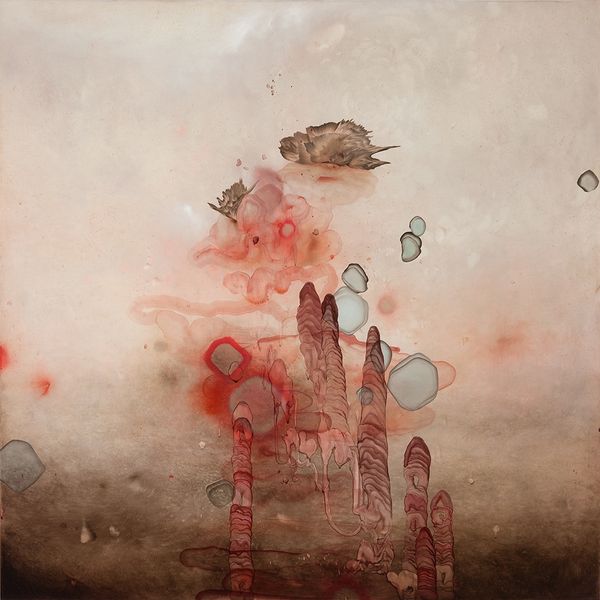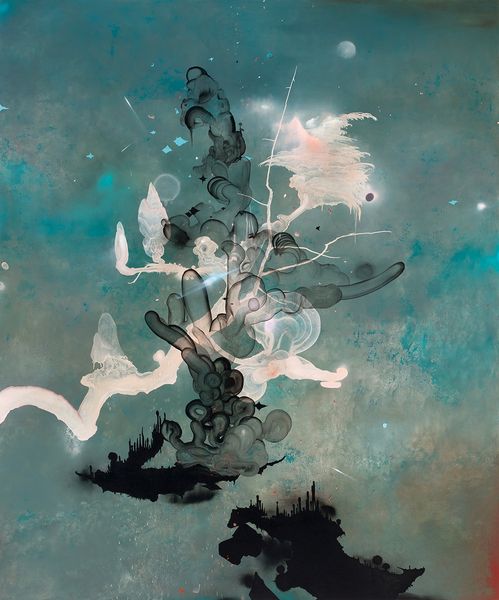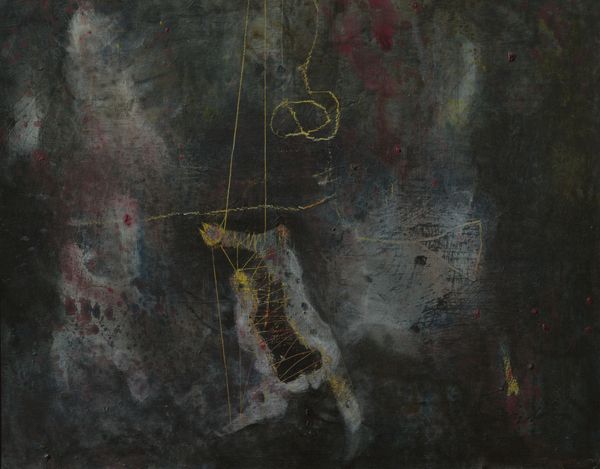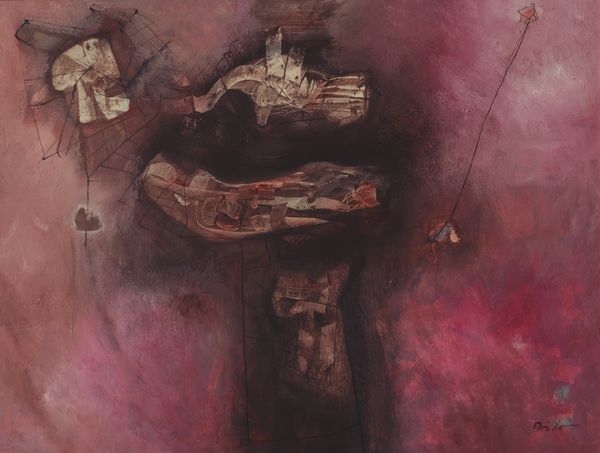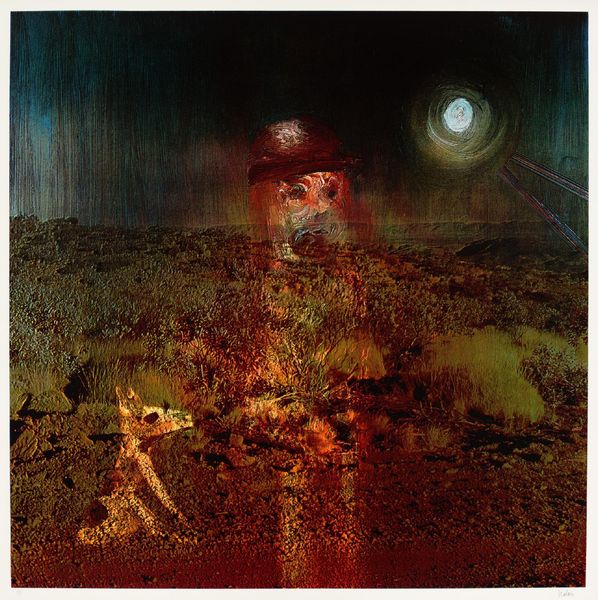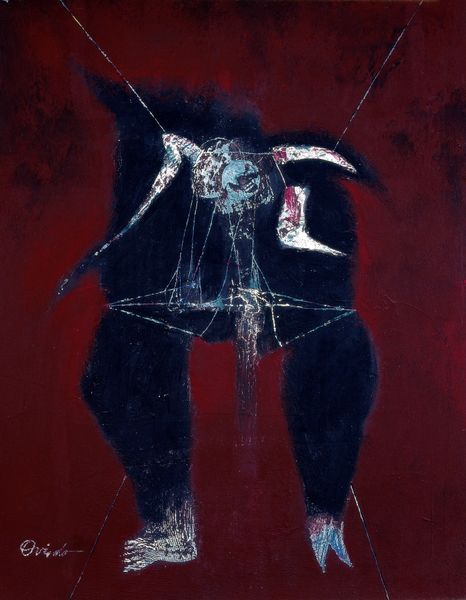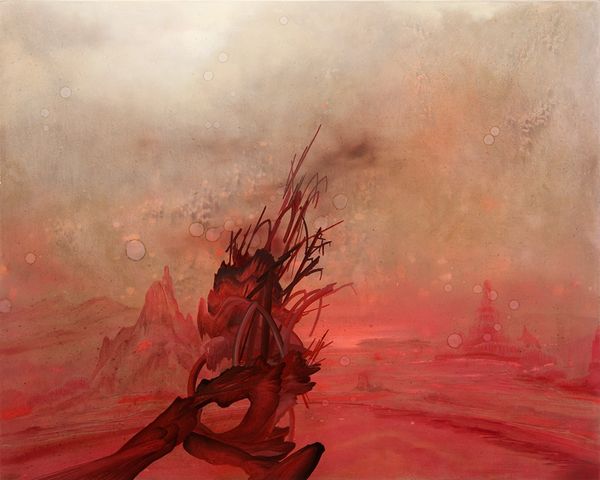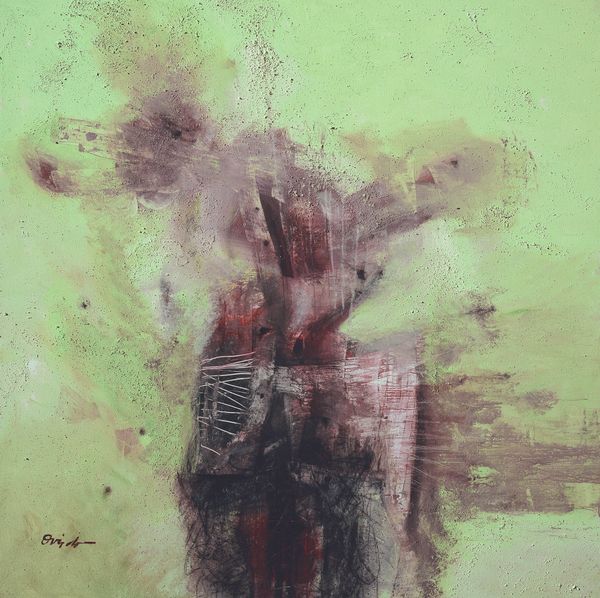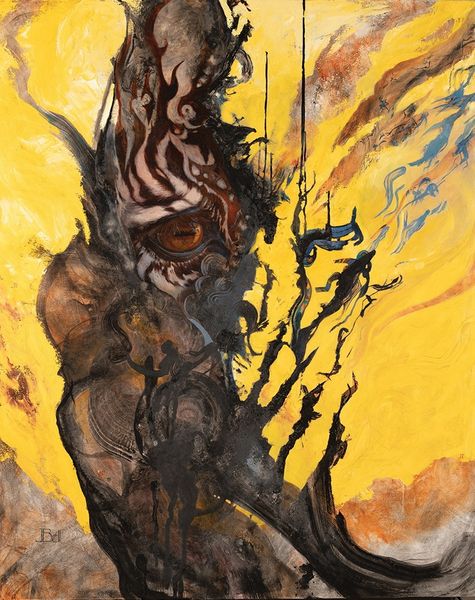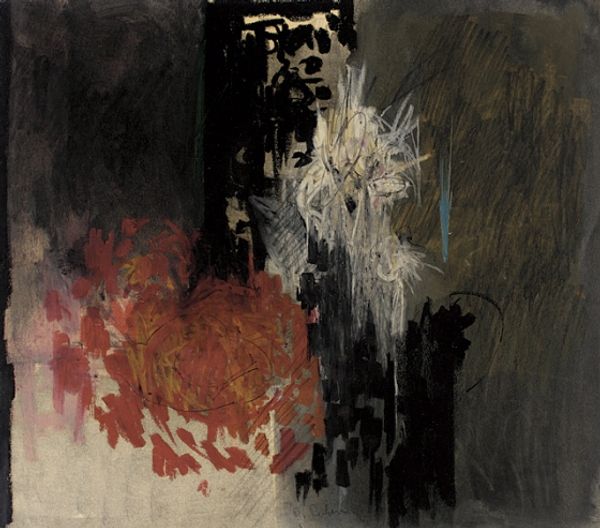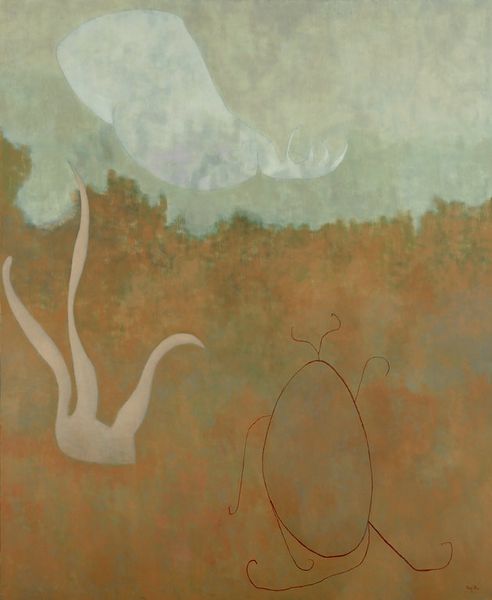
painting, watercolor
#
contemporary
#
water colours
#
painting
#
landscape
#
watercolor
#
abstraction
#
modernism
Copyright: Darren Waterston,Fair Use
Curator: Welcome. We’re standing before Darren Waterston’s "City on the Edge," a 2012 watercolor painting that blends landscape and abstraction in intriguing ways. Editor: Wow, it feels instantly melancholic. The muted tones and dreamlike quality give it an end-of-days vibe. Like a forgotten landscape teetering on the brink. Curator: That feeling of precarity is definitely there. Waterston's work often engages with environmental themes and reflects anxieties about the future. This painting, in particular, can be read as a commentary on urban development and its ecological impact, showing structures clinging tenuously to existence. Editor: Right. See how those strange structures are linked by a skeletal tree branch? It's beautiful, but also… brittle. There’s something haunting about the translucence of the watercolor. It's like looking at a memory, or a ghost. It almost makes me want to touch the art in person! I just want to connect to something in the painting, in its colors and figures. Curator: The technique is fascinating. The soft washes of watercolor create a sense of atmosphere and depth, blurring the lines between reality and fantasy. He often layers the paint, creating these nuanced effects, allowing for interpretations around the social issues of his artwork, such as housing issues. Editor: True. And it reminds me, the redness at the top adds a bit of drama to the otherwise faded color palette. As an artist, that color scheme would have not occurred to me to pair. Is this a sun? Or maybe more… fire? It leaves you to interpret a plethora of emotions. Curator: Exactly. The symbolism is multi-layered. That touch of red certainly introduces an element of unease, perhaps hinting at environmental crisis or social tension. Considering our conversations about capitalism, one can argue Waterston displays concerns about economic inequalities that impact environmental justice and the precariousness of marginalized communities. Editor: Well, seeing "City on the Edge" really got me thinking. I came into it thinking about watercolor, and how dreamy and calm it makes me feel. Now it’s more than just those watercolor elements; the use of environmental precarity makes me really step back and examine my current work and its message. Curator: Indeed, Waterston uses the sublime to provoke thought on some challenging topics in environmental ethics and policy, urging for systemic change. It’s great when a work generates so many connections across environmentalism, urban spaces, and more.
Comments
No comments
Be the first to comment and join the conversation on the ultimate creative platform.
